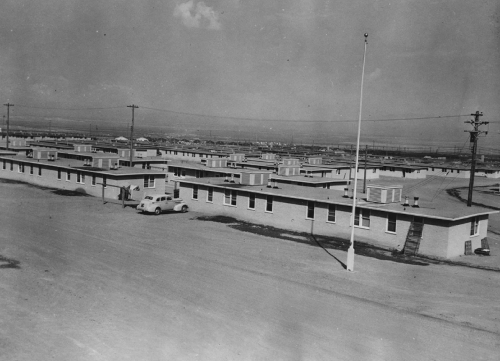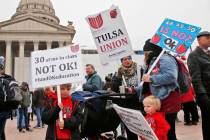Well-known architect designed Henderson’s Carver Park
Carver Park, segregated housing built in Henderson in the 1940s, was built by a prominent African-American architect and named for another well-known black figure.
Before Henderson was incorporated, it was known as Basic townsite. It housed workers from Basic Magnesium Inc., which produced magnesium used during World War II to make better bombs.
With an influx of workers coming to the townsite to work for BMI, some sort of temporary housing was needed.
According to the Paul R. Williams Project, based out of the University of Memphis that chronicles the achievements architect Paul R. Williams, Williams was commissioned in 1941 to design a development of 1,000 homes.
The housing units included different parts such as Victory Village.
One of the developments, known as the segregated Carver Park, was on the east side of Boulder Highway near Lake Mead Drive.
"Black families could only move into Carver Park," said Mark Hall-Patton, administrator for Clark County Museums. "But Carver Park was not just for black residents."
Hall-Patton believes a few white families eventually moved into the area, but for the most part, white families lived in the Victory Village area.
Hall-Patton said Carver Park was named for George Washington Carver, a leading African-American known for science and humanitarian work.
Carver Park had 64 units for single workers, 104 one-bedroom units, 104 two-bedroom units and 52 three-bedroom apartments. The development also included a school and recreation hall.
The apartments officially opened in October 1943, according to Henderson's 50th year anniversary book, "An American Journey."
The first family to move into Carver Park was the Williams family, which included Robert, his wife Rosie Lee and their children Yvonne, Clarice, Roscoe, Theodore and Cleopatra. The family moved into the unit Oct. 13, 1943.
After the townsite was incorporated and became Henderson, the area remained.
Hall-Patton said Carver Park later housed black airmen from Nellis Air Force Base.
After designing the development, Williams continued to break racial barriers.
"Race just wasn't a thing when a client wanted to work with an architect who had such a refined sense of aesthetics," said Deborah Brackstone, an archivist with the project.
Hall-Patton said Williams was the first black member of the American Institute of Architects.
"He was a well-known architect," Hall-Patton said. "It's great that he is tied to our history."
According to the Paul R. Williams Project, Williams designed other projects in Las Vegas, including the La Concha Motel, built in 1961; Guardian Angel Cathedral, built in 1961; and the Royal Nevada, a hotel built in 1955.
He also designed homes for entertainers such as Lucille Ball, Frank Sinatra and Zsa Zsa Gabor.
Brackstone thinks Williams' influence in American homes was just as important as some of the extravagant homes he designed.
Brackstone added that many of Williams' designs were featured in the publication "House Beautiful."
"From Mississippi to Kansas, a little bit of Williams lived in every housewife," Brackstone said. "Williams' taste choices influenced what American middle-class women wanted."
Williams died in 1980 at 85.
For more information about the project, visit paulrwilliamsproject.org.
Contact Henderson/Anthem View reporter Michael Lyle at mlyle@viewnews.com or 387-5201.














